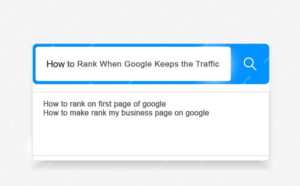The secret to dominating search engine rankings often lies in the depth and quality of your articles. While short and snappy pieces have their place, long-form content has emerged as a powerhouse for engaging readers, driving traffic and boosting search engine optimization (SEO). But why? What makes long-form content so effective in improving rankings and visibility?
This article will unravel the SEO benefits of detailed content and show you why crafting in-depth, well-structured pieces should be a cornerstone of your content strategy. Read on to know why long-form content ranks higher and how embracing it can transform your SEO performance and set your website apart in a crowded digital space.
What is Long-form Content?
Any article or blog post that is generally more than 1,000 words, is called long-form content. Unlike short-form content, which is brief and surface-level, long-form content dives deeper into topics, offering in-depth analysis, comprehensive insights, and valuable takeaways. From increasing dwell time to building authority, long-form content doesn’t just attract clicks—it creates lasting value for your audience and search engines alike. But what impact does this have on your SEO? Let’s find out.
Why Long-Form Content Ranks Higher
Search engines like Yahoo and Google prioritize content that provides value to users. Long-form articles are better equipped to address various questions, include detailed information, and keep readers engaged for longer periods. This increases engagement and thus, sends a positive signal to the various search engines, confirming that your content is both, authoritative and relevant. Also, long-form content allows for the integration of diverse keywords naturally. Long-form content helps improve your chances of ranking for multiple search queries as it helps search engines better understand your article’s intent.
You would like to read: Why SEO is Essential for Content Marketing
The SEO Impact of Long-Form Content
Here are the different ways in which long-form content affects SEO:
- More Opportunities for Backlinks: Long-form content has more chances to be referenced by other websites, resulting in backlinks. These backlinks boost your site’s domain authority.
- More Dwell Time: The longer the article, the more time your reader will spend on your website, reducing bounce rates. This increase in dwell time is a key ranking factor, notifying search engines that your content is valuable and engaging.
- Better Shareability: Content that resonates with readers has more chance of getting shared, on social media, email, or any other way. Increased shares mean more traffic, which contributes to improved search rankings.
- Enhanced Keyword Rankings: Due to long-form articles, you can include keywords naturally and not forcefully. This is especially useful for targeting long-tail keywords, which tend to have lower competition but high conversion potential.
Long-Form vs Short-Form
When you compare these two types of content for SEO, you get clear benefits of long-form content for better rankings. While short-form content can be useful for quick updates or announcements, it lacks the depth needed to establish authority and rank for competitive keywords. Long-form content provides a more comprehensive resource, which is essential for addressing user intent and maintaining search visibility.
How Long-Form Content Improves SEO
Following are some actionable tips to get a huge SEO boost with long-form articles:
- Incorporate Visuals: Include videos, infographics, and images to make your content more engaging, increase user time on it, and enhance its appeal.
- Structured Content: Use headings, subheadings, and bullet points to break up text and make it easy to read. This not only improves user experience but also helps search engines crawl your page effectively.
- Optimize for Keywords: To prevent harming your rankings, avoid keyword stuffing. Include primary and secondary keywords naturally throughout the article.
- Focus on Quality: Never sacrifice quality for quantity, even in long-form content. Your writing should be clear, concise, and error-free to maintain credibility.
- Encourage Engagement: The final tip to know how long-form content improves SEO is to always put a call-to-action (CTA) to prompt readers to share, comment or explore other pages of your website.
You would like to read: Festive Season SEO Strategies to Rank Higher
SEO Benefits of Detailed Content
The long-form content SEO advantages go beyond just ranking higher on search engines. It builds trust with your audience, positions your brand as a thought leader and gives a value that encourages repeat visits. With long-form content, you create evergreen resources that continue to attract traffic long after publication.
The Final Word
Generating long-form content isn’t just a temporary trend, it’s a proven strategy for building authority, engaging your audience, and dominating search engine rankings. Unlock the full potential of your website’s SEO by offering real value to your readers, diving deep into topics, and optimizing for relevant keywords. The SEO impact of long-form content goes beyond just better rankings; it helps establish your brand as a trusted resource, attracts backlinks, and keeps visitors coming back for more. Thus, do include long-form content in your marketing efforts regularly.
When you compare long-form vs short-form content for SEO, the advantages of detailed, comprehensive pieces are undeniable. Invest in creating thoughtful, high-quality articles that resonate with your audience, and watch as they drive meaningful results and elevate your search visibility. Embrace a long-form content strategy for SEO because the key to long-term success in the digital space lies in detail, depth, and delivering true value.










